Galveston FeatherFest
I’ve always been a backyard birdwatcher; building birdhouses and putting up feeders to see what I can attract. Just recently photography has become a hobby de jour. I see an event called Featherfest in Galveston which combines the two. This seems right up my alley.
Galveston Island is one of the top locations in the country for birdwatching. The island has a rich variety of natural habitats within its 32 miles. The beaches, wetlands, grasslands, woods, ponds, and bays are home to many common year-round bird species. The area is truly one of the best places in the country to bird watch because the Texas coast is on the Central Flyway, a broad, migratory flight path that extends from Alaska to South America. More than four hundred species of birds stop here on their way south or north, and the best months to see them are March and April.
Arriving at the FeatherFest HQ, I soon realize these people are serious about their birds and their cameras.
I spot a $1,000 pair of binoculars and spotting scopes and cameras with the lens the size of a cheerleaders megaphone. Equipped only with an old repurposed backpack and beer can size lens, I immediately feel inadequate.
The event features numerous birdwatching and photography workshops and field trips. I am most interested in the photo field trips but they are mostly booked by the time I get around to registering. I do, however, make it on the field trip to Bolivar Point.
To the Point
Boliver Point has several jutties and ponds that are home to many prized waterfowl. The trip to the Point requires a bus ride and a ferry ride. I’m sure in the company of such purist that throwing bread to the Laughing Gulls off the back of the ferry is frowned upon. However, It’s a simple pleasure I have enjoyed since childhood and I proceed on feeding and laughing along with the swarming gulls.

I admit I have had an inordinate number of hobbies. Photography just being the latest. But one thing I’ve learned through these hobbies, is there are people that get into them way more than I do. And I attract these hobby geeks. The hour-long bus ride is permeated by the constant droning of a megaphone lens touting camera junkie. I hear more f-stop this and aperture that with some ISO thrown in for good measure. I’m ready to scream “For the love of god just take a picture out the window, you could probably capture the International Space Station with that lens your carrying. I hope there’s not some kind of reverse reflection off his lens that will pulverize any poor unsuspecting Whimbrel that we might stumble upon.
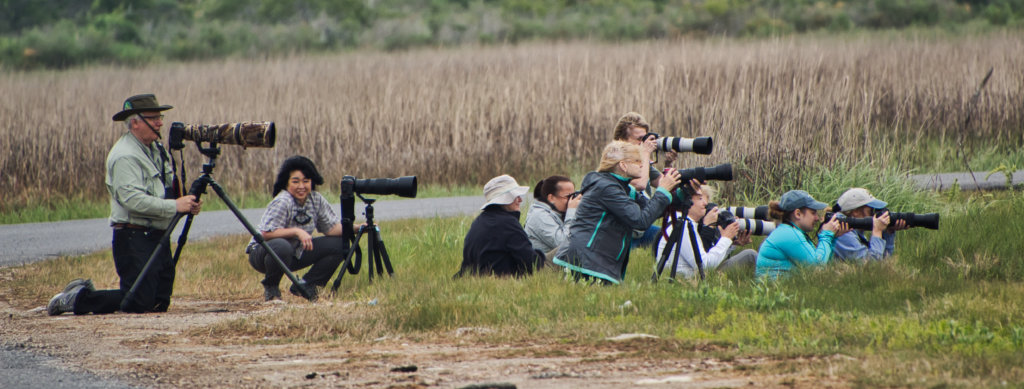
Shhhh!
We arrive at fowl bearing pond and lo and behold there is a Dowitcher AND a Stilted Sandpiper. I know! I had to contain myself too. We are instructed to exit the bus one by one in a crouched position and assume a position along the pond’s edge. I appreciate finding and photoing birds, my Facebook and Instagram feed is loaded with them. However, this whole group love thing was just too much for me. I slink out of the bus and up the road to take pictures of a perfectly photo-worthy lighthouse that seems to go unnoticed by others.
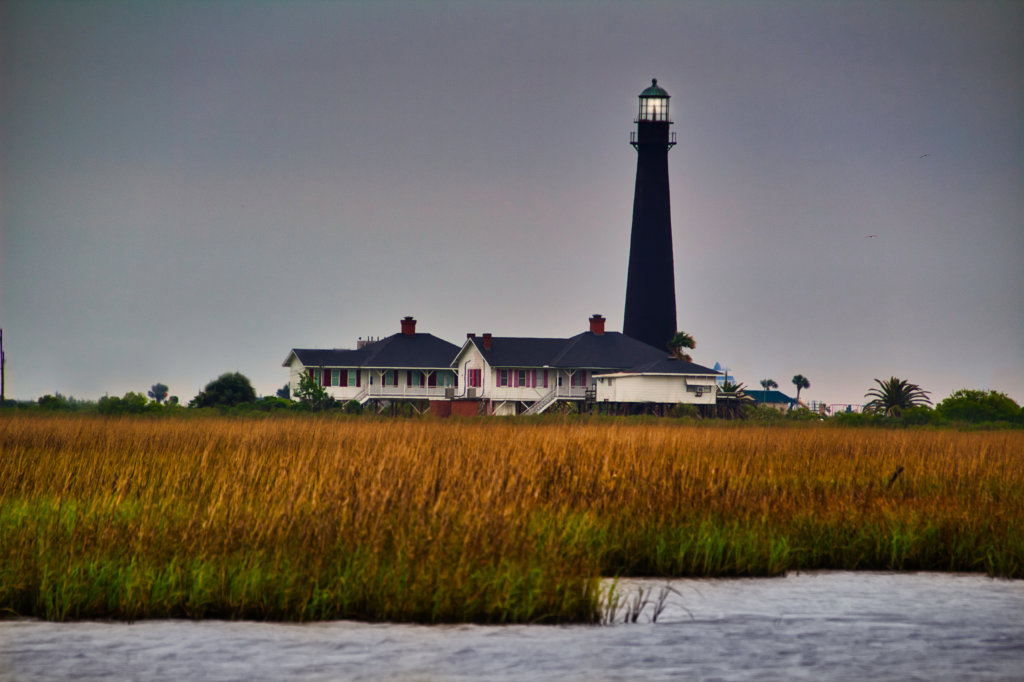
Oh, okay, I had to snap a photo just like the others were doing. Here is what all the fuss was about. I present the Short-Billed Dowitcher and Stilt Sandpiper.
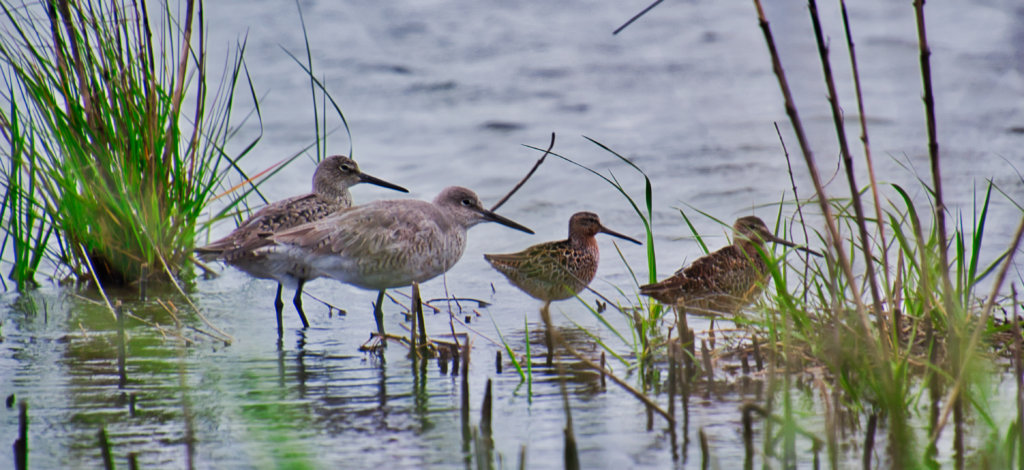
To the Rookery Birdman
During the Bolivar bus trip, the leader was very knowledgeable and helpful and I thoroughly enjoyed learning from her. I express my desire to find and photo the large pink Roseate Spoonspill. I have spotted them in the Everglades and on the Creole Nature Trail, but never close enough to get a decent photo. She directs me to a rookery on High Island, about 2-hours away, where they are breeding and nesting. Excitedly, I head to Smith Oaks Rookery the next day.
The place is in the middle of nowhere and I pass very few cars but the parking area there is overloaded. I thought I had an insider tip that no one else knew about; no such luck. I proceed down a trail and come across one of 5 viewing platforms. There is a menagerie of birdwatchers in position to view the goings-on of hundreds of; elusive Rosettes, Egrets, Cormorants, and Herons.
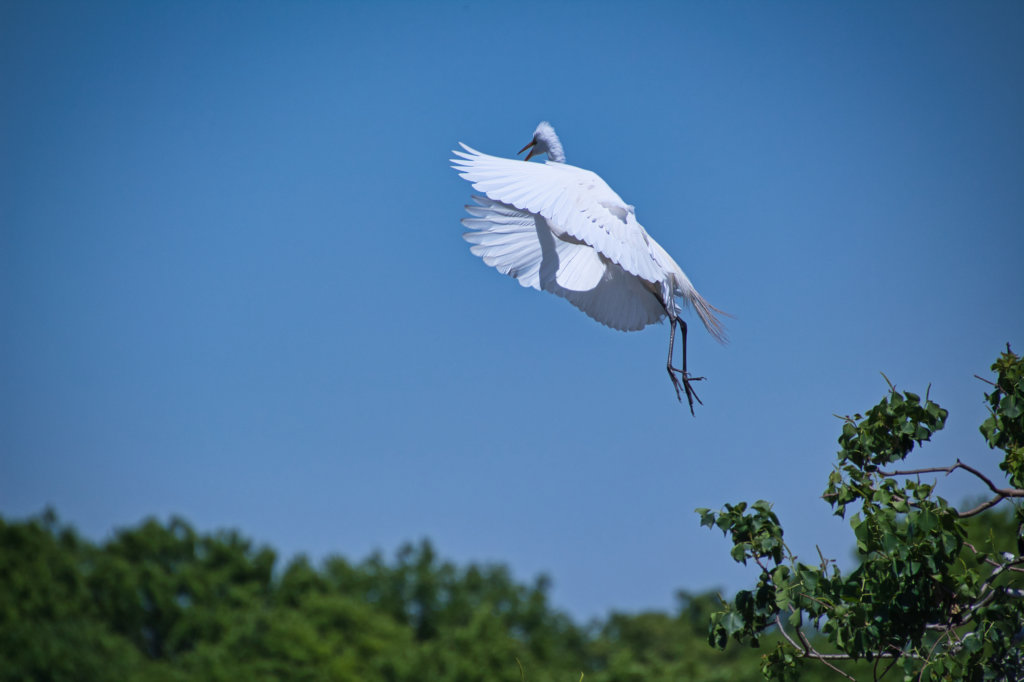
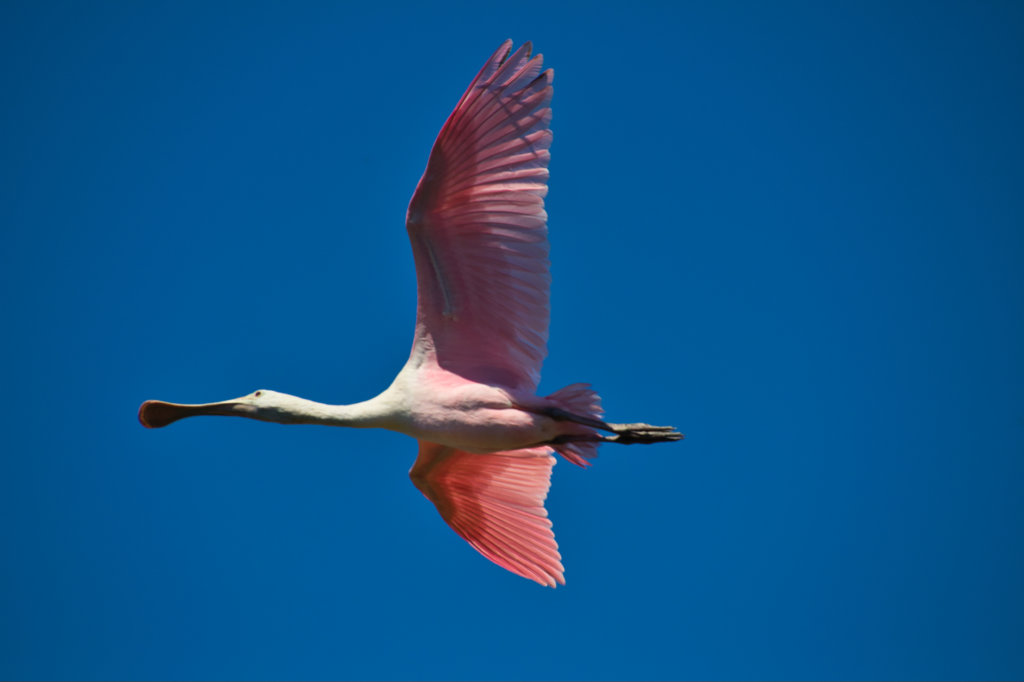
It is a spectacular display of nature, the views are stunning and the various calls, chortles, and gurglings from the birds are captivating. I move from platform to platform snapping pictures here and there and decide on the one that gives me the best chance to see and capture some birds while in flight.
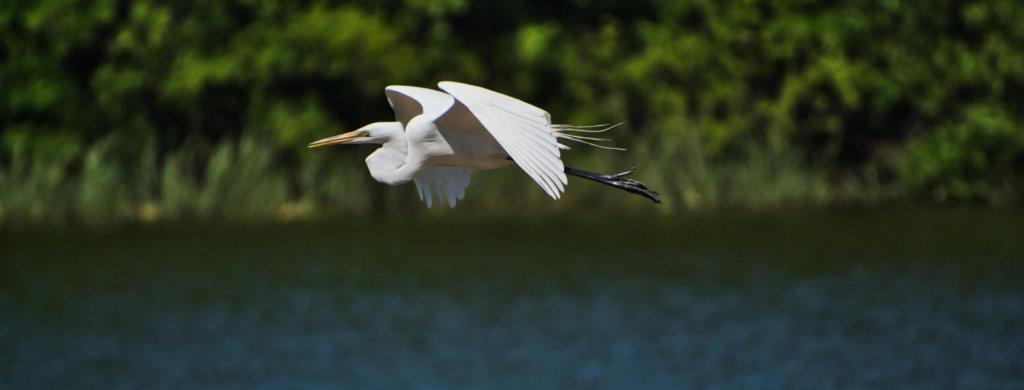
Here we go again
I position myself for optimal birdwatching and I be damn there is another camera jabber mouth right beside me. Nikon better than Canon and the Mark IID has four SDRAM slots and capable of 4K movies and on and on and on. Before us is: a mother egret feeding her young, a pair of Roseates’ courting with a display of spooning; rubbing the bills together, a pair who have had enough foreplay and were getting down to business and sadly down below it all an opportunist alligator that was smacking his lips finishing off a fledgling that had fallen from the nest. It’s a real-life National Geographic episode right before our eyes and the guy never stops talking. Hell, he never even took a picture.
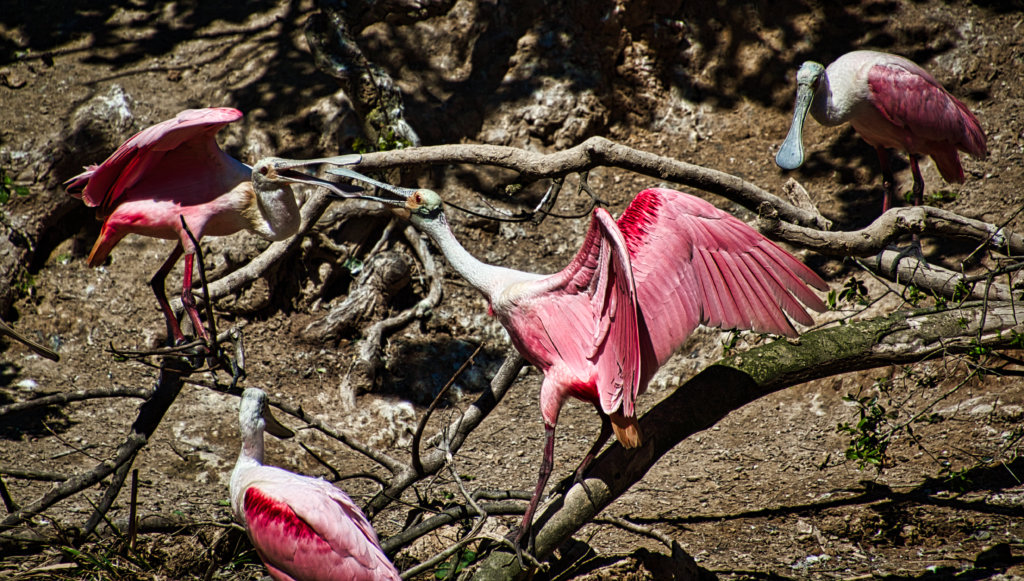
Hats Off to the Audubon Society
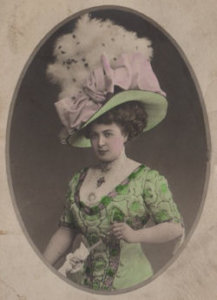
Rookeries such as this have allowed the Roseates and Egrets to make a remarkable comeback since protections were placed on them the 1890’s. The women’s fashion of the day featured feathered hats. The colorful feathers came to represent status and some women had a tendency to exaggerate their social status (imagine that) and would have extreme feathery display atop their heads. The bird’s feathers are prized by milliners (hatmakers) in the Victorian age. Along with the Flamingo, these birds are nearly hunted to extinction for their feathers.
After the death of game warden by plume hunters, a group of Boston women formed to reign in the harvesting of the colorful birds. This group is to later become the Audubon Society, and their nationwide crusade is credited with saving these majestic birds. Hats off Gals!
And even bigger featherless hats off to the organizers of Featherfest. It is a one of a kind event that offers a little something for not only birdwatching but for everyone. And I got my much sought after Roseate Spoonbill photos.
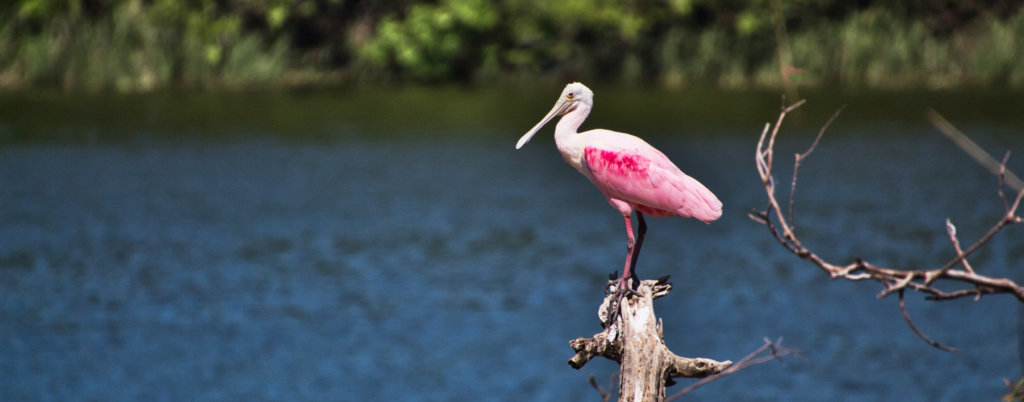
Birdwatchers and Photographers flock to Galveston as it is one of the top locations in the country for birding. It hosts a wide variety of habitats in a small geographical area where some 300 species make their permanent or temporary home throughout the year. Here are 10 fantastic locations for birdwatching and catching a photo of your favorite rare birds.
Galveston Top Ten Birdwatching Spots
1. East End Lagoon, Big Reef Nature Park.
A 684-acre tract of natural coastal prairie is east of Seawall Boulevard along Boddeker near Apffel Park in Galveston.
What you might see: Shorebirds, birds of prey and migrating birds. Black skimmers, terns and piping plovers nest along the beachfront, while red-winged blackbirds rest in the tall grasses. Egrets and herons fish in the lagoon.
2. Corp Woods Nature Sanctuary:
This heavily wooded area is near Ferry Road by the U.S. Coast Guard headquarters in Galveston. Take a right onto Texas 168 to the parking area.
What you might see: During spring migration, abundant tanagers, orioles, and buntings.
3. Offatts Bayou:
Best viewing is from parking areas on the west side of 61st Street in Galveston.
What you might see: Loons, grebes and diving ducks in winter, and eared grebes and red-breasted mergansers from late winter to spring.
4. 8 Mile Road, Sportsman Road and Lafitte’s Cove Nature Preserve:
Travel west on Seawall Boulevard and turn right onto 8 Mile Road for superb water birding. You can look for birds all the way to the bay or turn left on Sportsman Road. Lafitte’s Cove is off Stewart Road on Eckert Drive between 11 Mile and 12 Mile roads. Parking area is next to a boardwalk.
What you might see: Waders, shorebirds, oystercatchers. At Lafitte’s Cove: warblers, vireos, thrushes, ducks, shorebirds, snipe.
5. Galveston Island State Park:
14901 FM 3005. West of Galveston on Seawall Boulevard, which becomes FM 3005, the state park provides a sample of all the habitats found on the island. It includes 2,000 acres reaching from the Gulf of Mexico to West Bay.
What you might see: All-year-round wading birds, and for summer or winter, birds that prefer open prairie and wetlands. Ted Eubanks has compiled a checklist of birds seen at the park. Ask for a copy at the park’s Nature Center.

6. West End: Dos Vacas, San Luis Pass Flats:
Dos Vacas Muertas is a small preserve favored by birdwatchers with salt cedar trees and a freshwater pond. Take FM 3005 west. The entry for Dos Vacas is just before Sea Isle. San Luis Pass is about 2 miles west in Galveston.
What you might see: Pelicans, sandpipers, gulls, avocets, herons, egrets, raptors, sparrows, grebes, loons. Colonies of terns nest at San Luis Pass.
7. Bolivar Flats Shorebird Sanctuary:
Bolivar Flats on Bolivar Peninsula combines salt marsh, mudflats, and beach habitats. So rich is the birdlife, that it has been designated a Globally Important Bird Area. From Galveston, take Broadway to Seawall Boulevard. Turn left on Seawall. Turn left on Ferry Road to the Galveston-Bolivar Ferry terminal. You’ll exit the ferry on state Highway 87. Follow this for 3.7 miles to Rettilon Road. Turn right and drive to the beach.
What you might see: A huge variety of species, including gulls, terns, pelicans, herons, egrets and spoonbills.
8. High Island: Boy Scouts Woods, Smith Woods and the Rookery:
Houston Audubon Society has four fantastic birdwatching nature sanctuaries at High Island, including Boy Scout Woods, and Smith Oaks, which is home to the Rookery. There is a minimal fee to visit, which helps with the cost of maintenance. Take the Galveston-Bolivar Ferry (be sure to pack some bread for the gulls and feed off the back of the boat) and continue on State Highway 87 through Crystal Beach to High Island.
What you might see: The U-shaped island in the middle of Claybottom Pond at Smith Oaks has become a favored roosting and nesting place for thousands of water birds. In the spring and summer, herons, egrets, cormorants, and spoonbills build their nests and raise their chicks.
9. Anahuac National Wildlife Refuge:
This 34,000-acre coastal marsh and prairie borders Galveston Bay.
What you might see: Egrets, bitterns, hawks, kites, and eagles. Storks, pheasants, turkeys, falcons, ibises and spoonbills, cranes, plovers, stilts and avocets, ducks, geese, swans, sandpipers, rails, gallinules, and coots.
10. Texas City Dike and Levee Loop:
The Texas City Dike is a great birdwatching experience about 20 miles from Galveston. Take the Texas City exit on Interstate 45 and continue on State Highway 146. Turn right on Texas Avenue, left on Bay Street Road, and then right on Texas City Dike Road.
What you might see: Brown pelicans, willets, laughing gulls, forster’s terns, waders and black skimmers. In winter, you can also see loons, grebes, and bay ducks.






Glad you are enjoying your newest hobby, photography, it is fun. I joined a photo club so as to learn more about my camera and yes, a little bit more about those f-stops, ISO, exposure, etc. There are always, no matter where you are, those who have to tell you EVERYTHING they know, think, feel, ad nauseum. I can tell you have already mastered the art of tuning these idiots out and continuing with what you were there to do, take photographs of what YOU want to. Beautiful lighthouse.
Having fun traveling the country with you in spirit. The manatees say hi! (:3)
P.S. The Voice is better than Idol, but I know it was that little Iowa filly that got you watching this time.